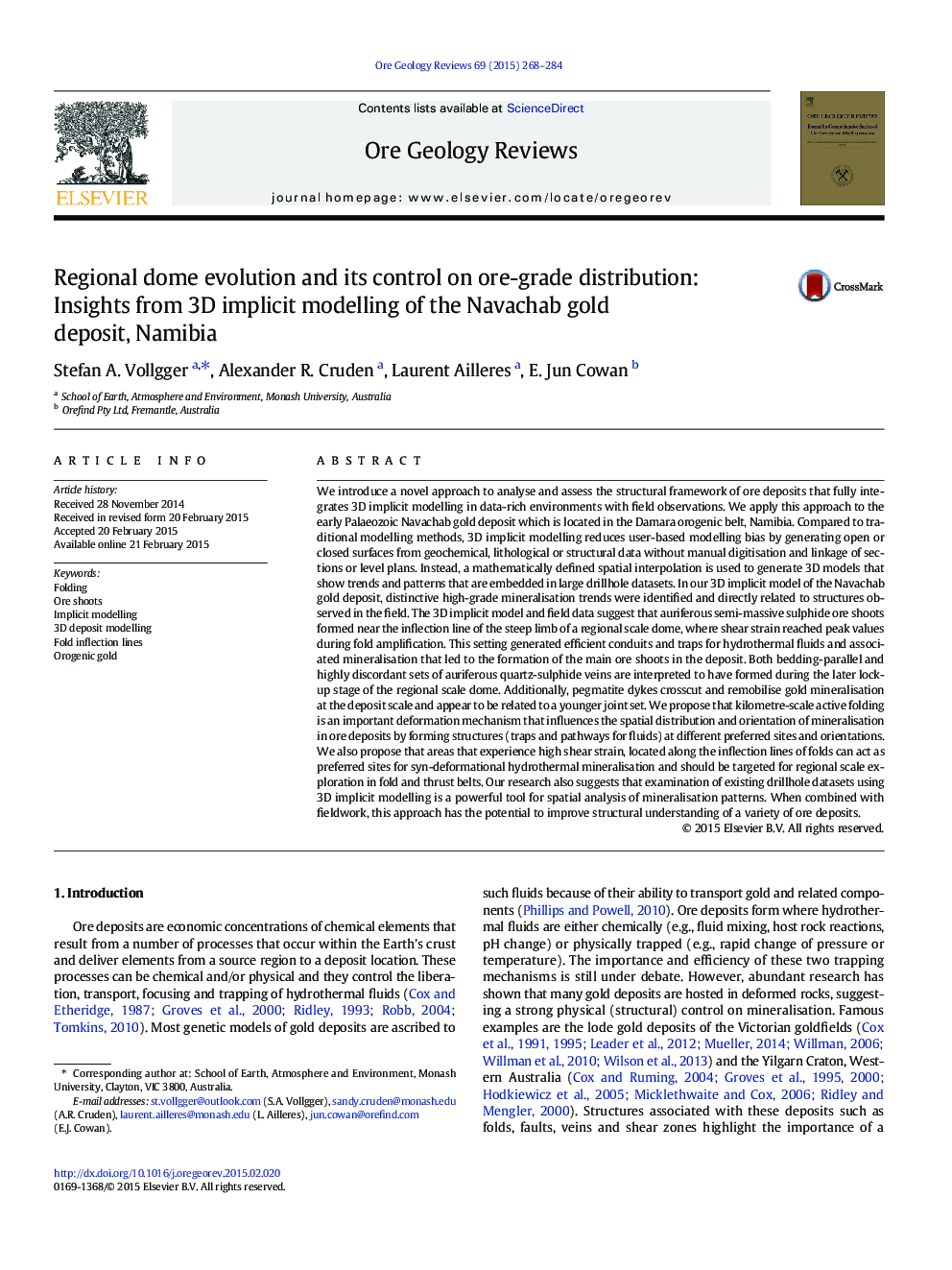| کد مقاله | کد نشریه | سال انتشار | مقاله انگلیسی | نسخه تمام متن |
|---|---|---|---|---|
| 4697320 | 1637235 | 2015 | 17 صفحه PDF | دانلود رایگان |

• Structural trends in a large drillhole dataset are assessed by 3D implicit modelling
• Modelled high-grade mineralisation trends are linked to field observations and data
• Ore shoots are localised along the inflection line of a regional scale dome
• Mineralised vein sets formed during final dome amplification and lock-up stages
• Gold is remobilised and redistributed by post-doming, subvertical pegmatite dykes
We introduce a novel approach to analyse and assess the structural framework of ore deposits that fully integrates 3D implicit modelling in data-rich environments with field observations. We apply this approach to the early Palaeozoic Navachab gold deposit which is located in the Damara orogenic belt, Namibia. Compared to traditional modelling methods, 3D implicit modelling reduces user-based modelling bias by generating open or closed surfaces from geochemical, lithological or structural data without manual digitisation and linkage of sections or level plans. Instead, a mathematically defined spatial interpolation is used to generate 3D models that show trends and patterns that are embedded in large drillhole datasets. In our 3D implicit model of the Navachab gold deposit, distinctive high-grade mineralisation trends were identified and directly related to structures observed in the field. The 3D implicit model and field data suggest that auriferous semi-massive sulphide ore shoots formed near the inflection line of the steep limb of a regional scale dome, where shear strain reached peak values during fold amplification. This setting generated efficient conduits and traps for hydrothermal fluids and associated mineralisation that led to the formation of the main ore shoots in the deposit. Both bedding-parallel and highly discordant sets of auriferous quartz-sulphide veins are interpreted to have formed during the later lock-up stage of the regional scale dome. Additionally, pegmatite dykes crosscut and remobilise gold mineralisation at the deposit scale and appear to be related to a younger joint set. We propose that kilometre-scale active folding is an important deformation mechanism that influences the spatial distribution and orientation of mineralisation in ore deposits by forming structures (traps and pathways for fluids) at different preferred sites and orientations. We also propose that areas that experience high shear strain, located along the inflection lines of folds can act as preferred sites for syn-deformational hydrothermal mineralisation and should be targeted for regional scale exploration in fold and thrust belts. Our research also suggests that examination of existing drillhole datasets using 3D implicit modelling is a powerful tool for spatial analysis of mineralisation patterns. When combined with fieldwork, this approach has the potential to improve structural understanding of a variety of ore deposits.
Figure optionsDownload as PowerPoint slide
Journal: Ore Geology Reviews - Volume 69, September 2015, Pages 268–284